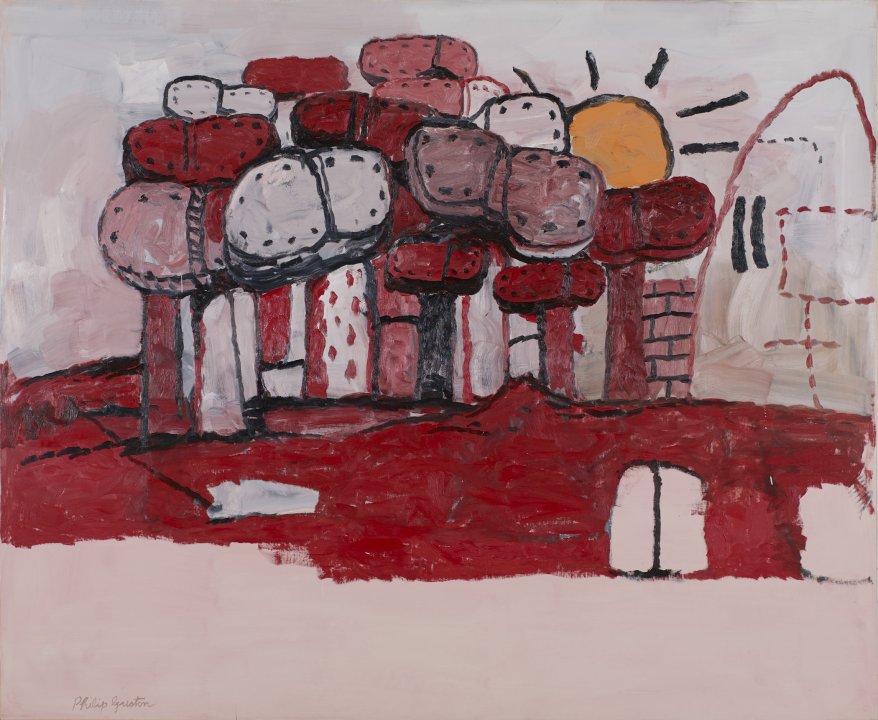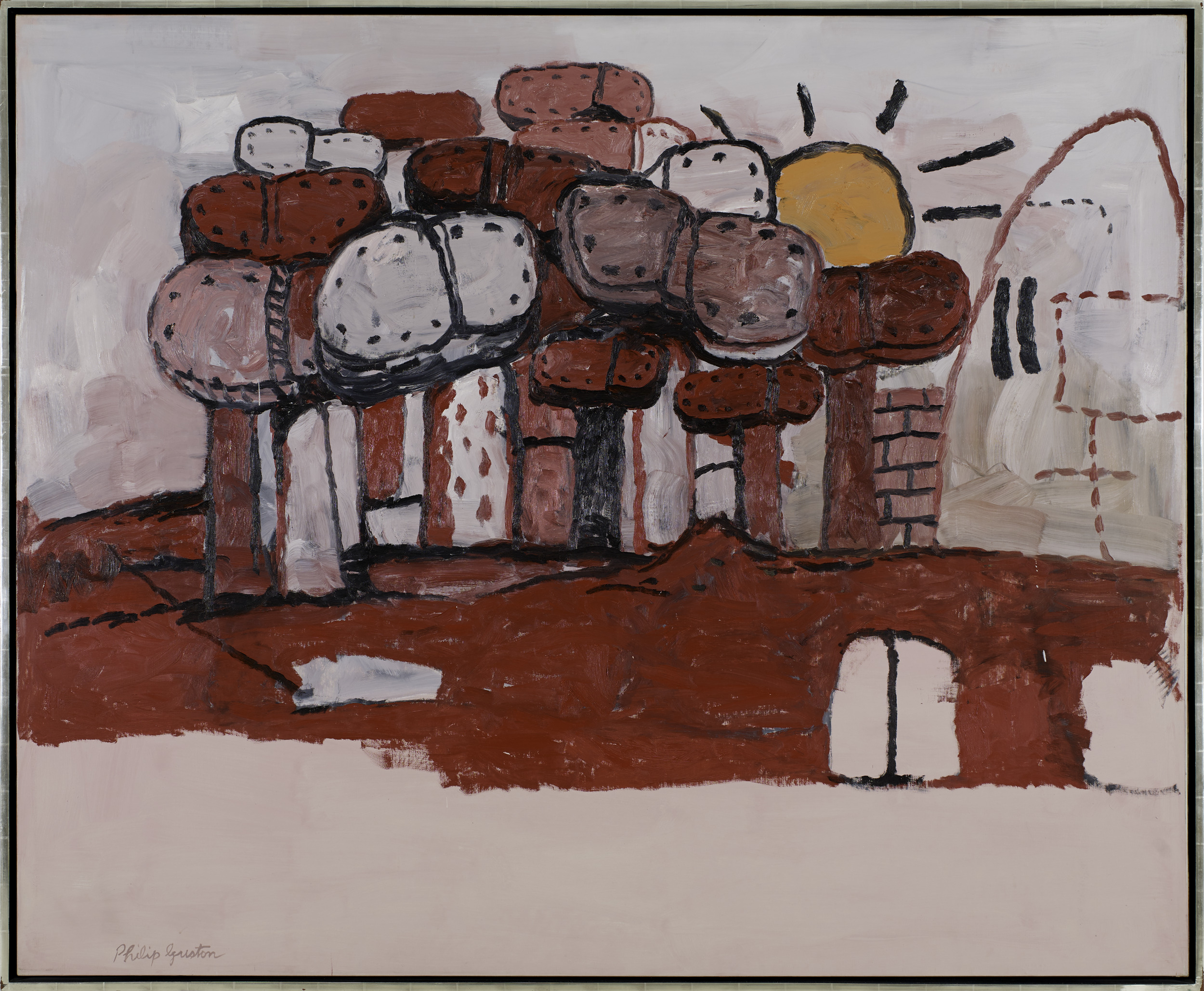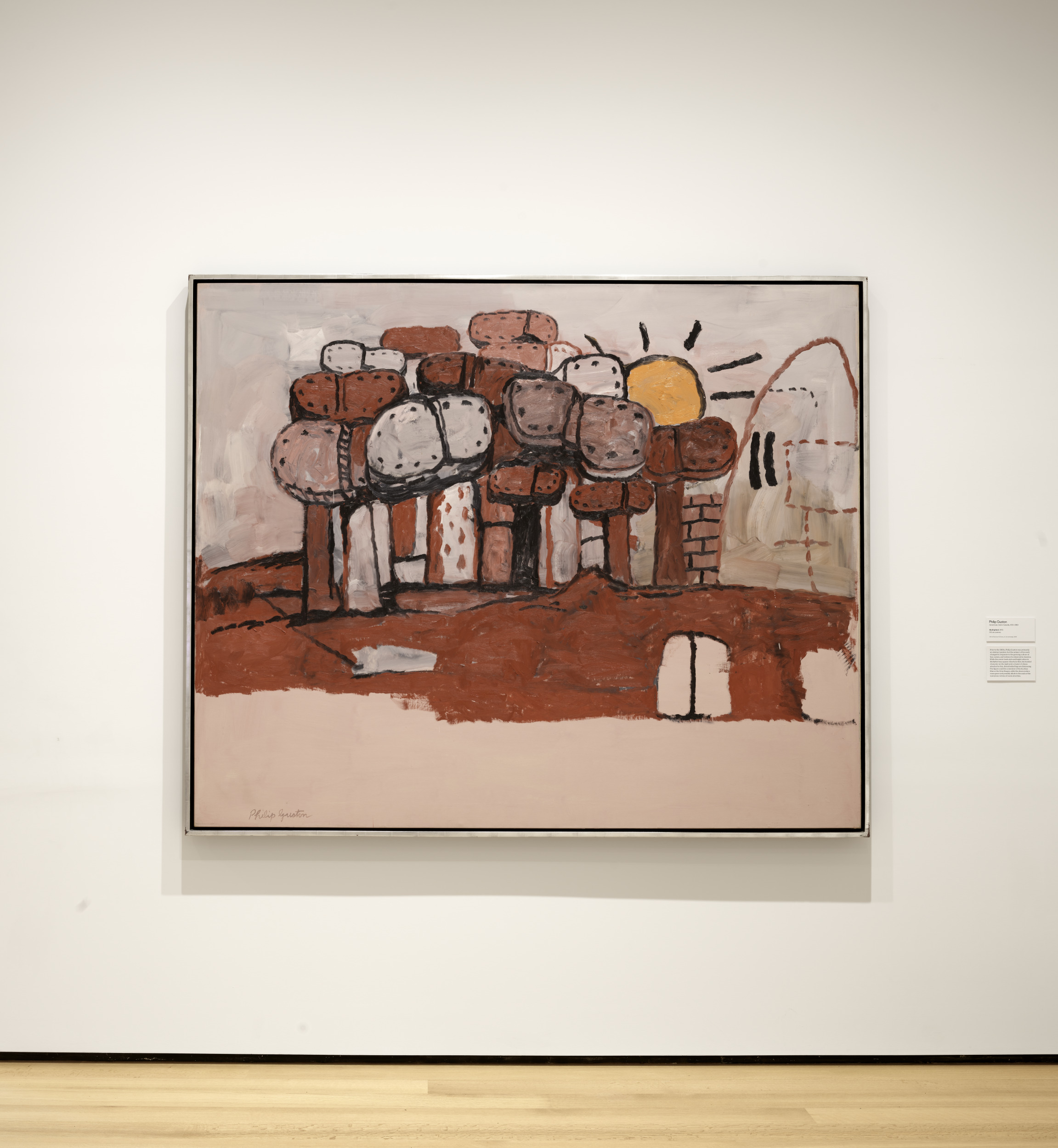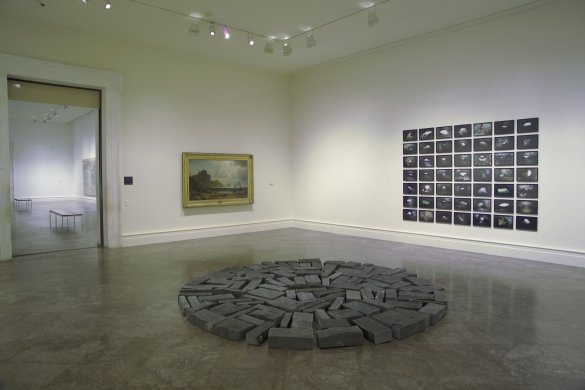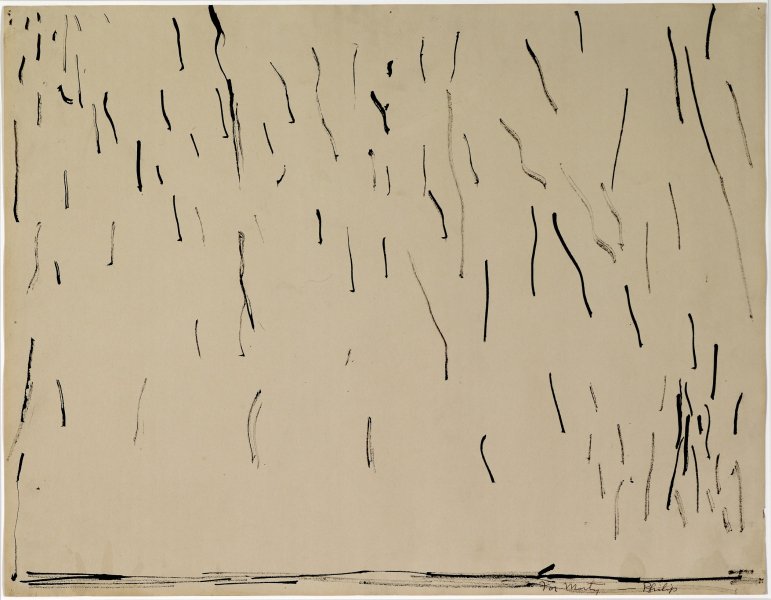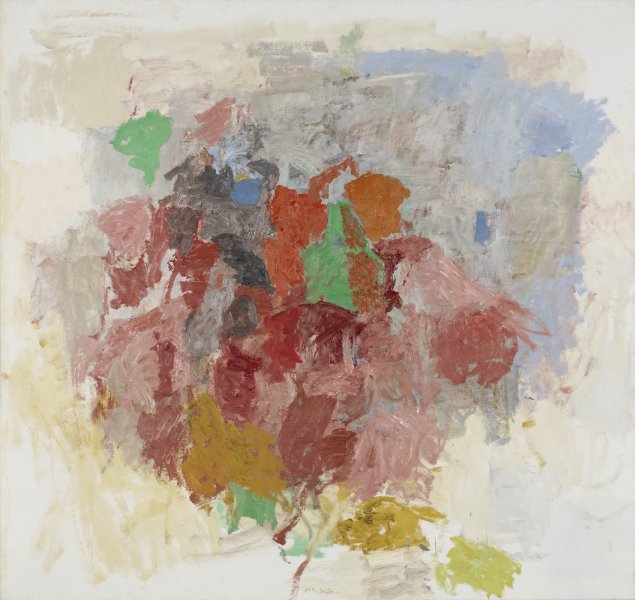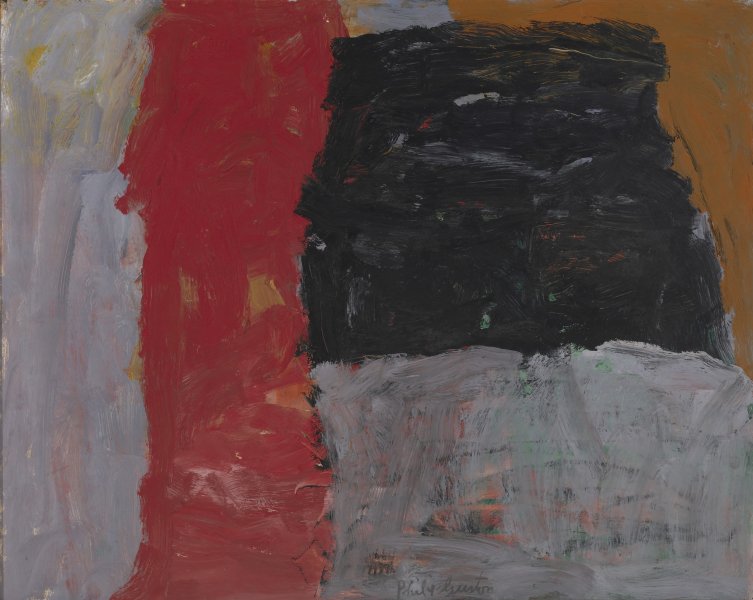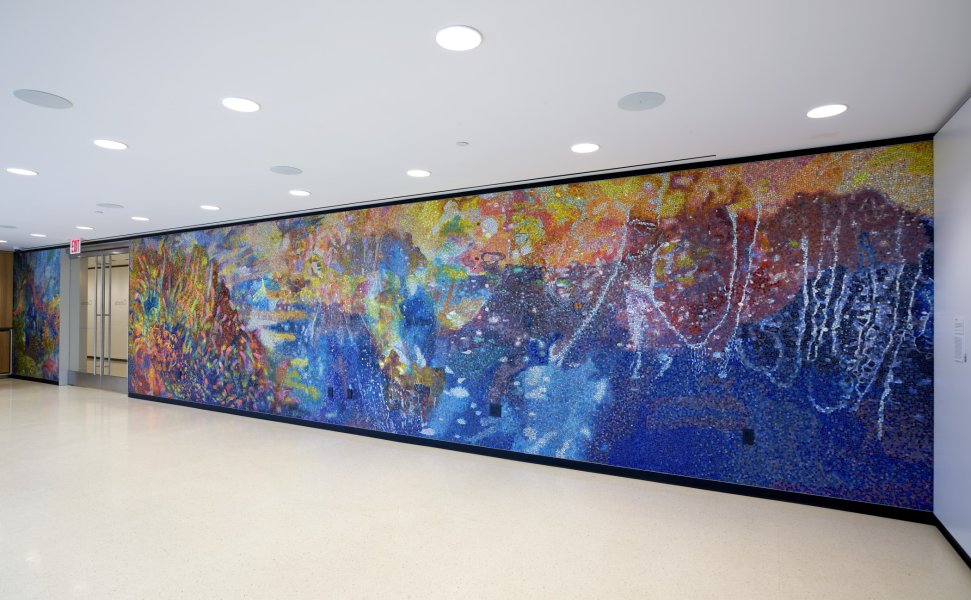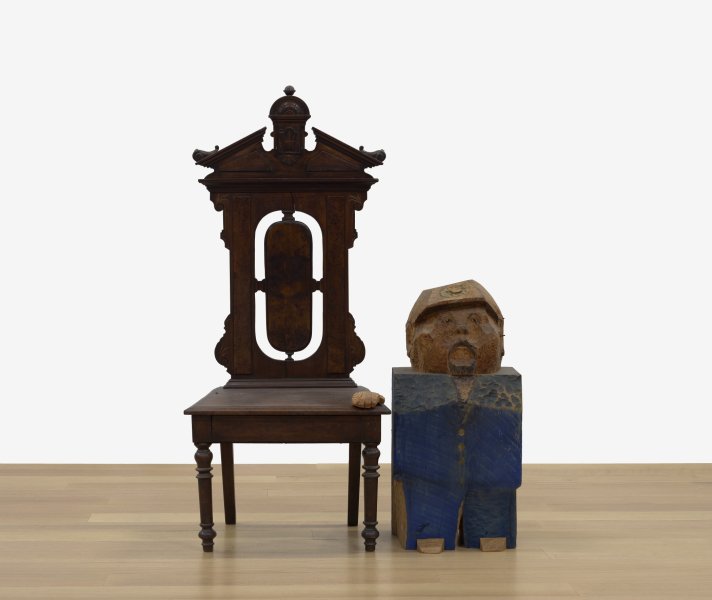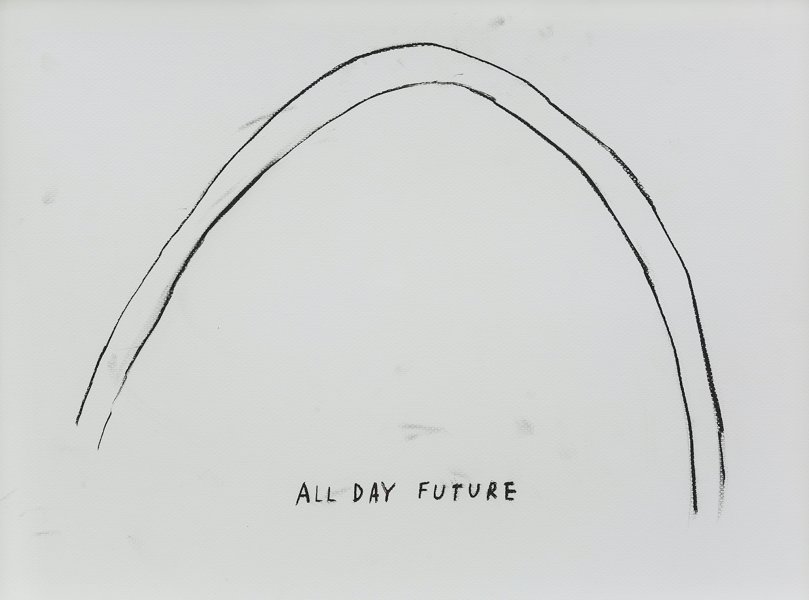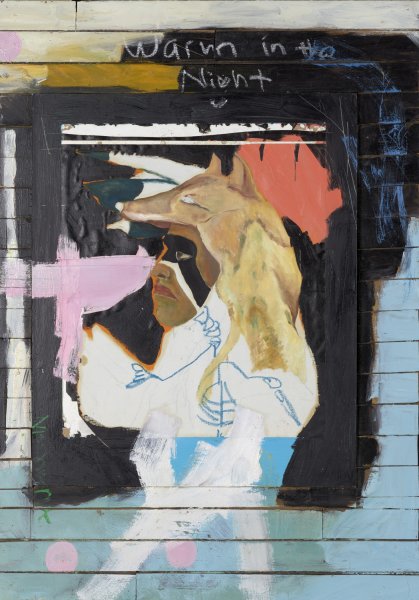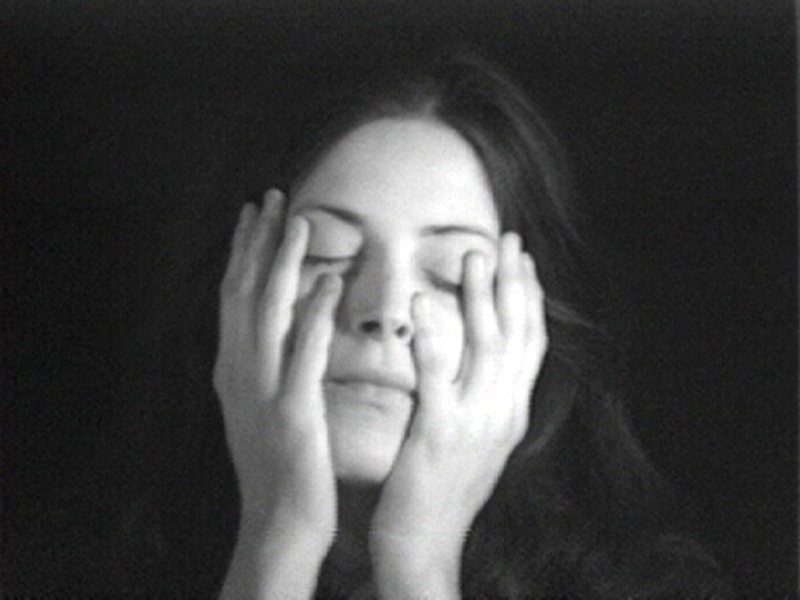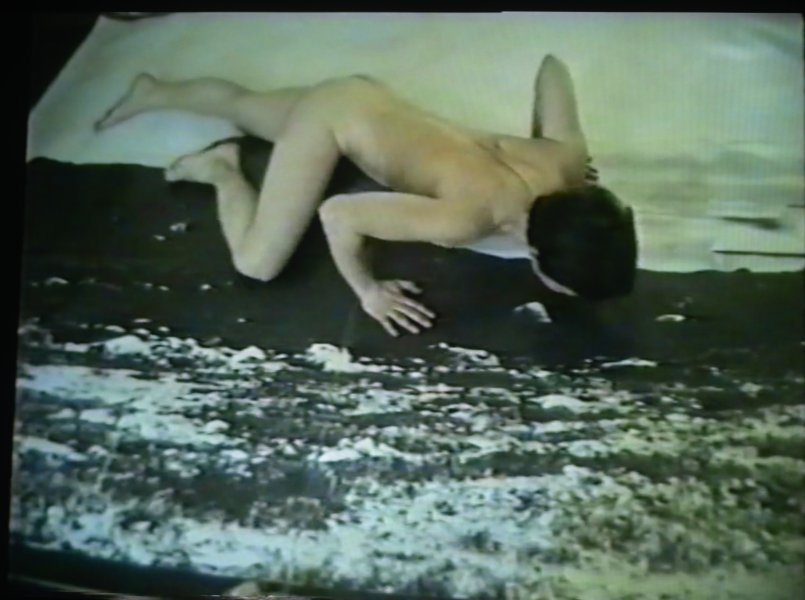Philip Guston
American, born Canada, 1913-1980
Multiplied, 1972
Artwork Details
Currently on View
Collection Highlight
Materials
oil on canvas
Measurements
support: 66 x 80 1/2 inches (167.64 x 204.47 cm); framed: 68 x 82 5/8 x 2 inches (172.72 x 209.87 x 5.08 cm)
Collection Buffalo AKG Art Museum
Credit
Gift of Seymour H. Knox, Jr., by exchange, 2000
Accession ID
2000:7
Philip Guston began his career painting social realist murals for the Federal Art Project under the Works Progress Administration. After settling in New York in the 1940s, he gravitated toward Abstract Expressionism. However, he ultimately abandoned abstraction in 1968 as a response to the social upheavals of the era. Developing a highly original style influenced by the comic books he loved as a boy, Guston redirected his practice to confront the injustices and growing culture of fear, racism, and violence he observed in American life. While the bright colors of Multiplied may at first appear cheerful, the hooded figure on the right of the picture plane alongside a cluster of shoes attached to thin, disembodied legs adds a distressing note. This entity is a reoccurring motif that connects Guston’s later work to his formative years as a painter, when he often depicted the brute subject matter of lynching and outfitted Klansmen. Embedded in the work’s imagery are numerous dualities. In this graveyard-like scene, for example, the figure is reminiscent of the Grim Reaper—another ominous, albeit fictional, cloaked character. Likewise, the soles of the shoes allude to the souls of the numerous victims of racial atrocities.
